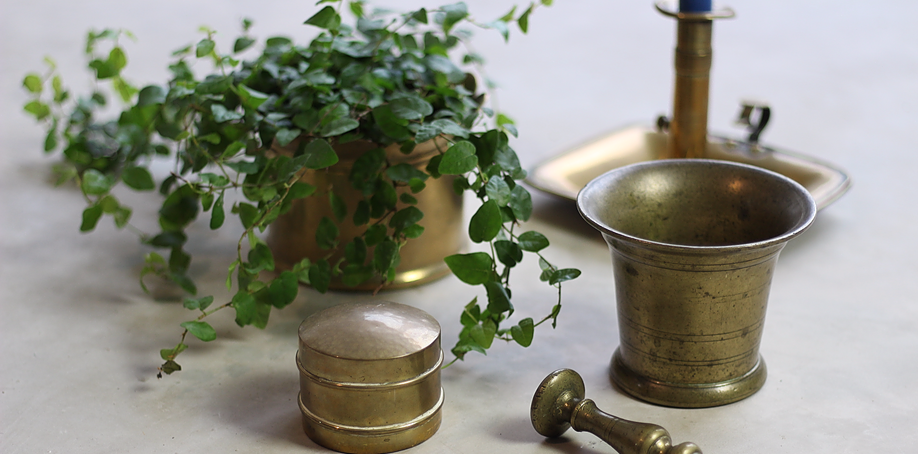What is Trench Art?
As long as humans have had reason to go to war with one another, war souvenirs or 'Trench Art' will have existed in some way. Naturally, with the passing of time, objects from the earliest of conflicts will have lost links to their original reason for being made. We have a look at the interesting history of Trench Art in this article.
So what is Trench Art? The term was defined by a leading author on the subject, Dr Nicholas Saunders in 2001 as:
'Any item made by soldiers, prisoners of war and civilians, from war material directly, or any other material, as long as it and they are associated temporally and/or spatially with armed conflict or its consequences'.
The early 18th Century saw the tradition of creating wartime souvenirs begin on a large scale, and it continues on today, throughout modern conflict. During the early 19th century and the Napoleonic Wars, approximately 100,000 French soldiers were captured by the British and housed within huge hulk ships. For many years, these Prisoners of war would remain on board, with nothing but each other. They used bones from their food, strands of their own hair, along with clothing scraps to create trench art. A common nautical theme ran through the art work created by the Napoleonic POWs. Making models of British boats was also common as there was a market for these with their jailers/prison officers. Anything to trade to slightly improve their bleak existence.
The amount of Trench art grew significantly during the First World War. The war that was widely believed would only last a matter of months, lasted over four long years. Beginning on the 28th July 1914, and ending on 11th November 1918, this global conflict caused unprecedented levels of slaughter and destruction. The two opposing alliances; The Allies (United Kingdom, France, Russia, the United States of America, Japan and Italy at a later date) and the Central Powers (Germany, Austria-Hungary, Turkey, and the Ottoman Empire and Bulgaria at a later date) fought for power, with the Germans eventually signing an armstice in 1918.
Interestingly this war was also the first for chemical warfare, gas masks, IQ tests, guide dogs, flamethrowers, steel helmets, tank battles, aerial warfare, aircraft carriers, a blood bank, women enlisting, filmed propaganda, military x-rays and wireless communications.
Trench art most certainly took it's name from the First World War, but doesn't apply to art only created in the trenches.In fact this only make up a very small percentage of the art created. As the above quote from Dr Nicholas Parsons tells us, it is a broad term that describes a concept. It was made by Soldiers whether active or convalescing, Prisoners of War and civilians.
The Edwardian Era was over, the Arts and Crafts movement and Art Nouveau styles were upon us, and people were decorating their interiors with beautiful handmade objects. Armies were made up of craftsmen from across the globe, who continued to use their skills whilst enlisted. Even when at war, there was a great deal of spare time to fill, and an obvious need to concentrate on something else. Reusing items around them such as lead, brass and copper from bullets, spent charge cases and shell driving bands created a great many objects. Some examples of items made include letter openers, cigarette lighters, matchbox covers, rings and military caps. Sometimes they were inscribed with initials, dates, or messages, and kept as souvenirs or gifts to be given to family members.They also carved wooden pieces from shrapnel and carved bone pieces from food. Often convalescing or disabled servicemen would create embroidered silk postcards, or embroidery samplers. These antiques are obviously highly sought after and displayed in many museums across the world.
It's also easy to forget that there were a large number of troops who worked in workshops behind the scenes and engineering depots, who kept operations running. They had resources and machinery to help them make some of the larger items we see. These are the sort of items that were sent back and sold as souvenirs. Nowadays, you can find plant pots, candle holders, pestles and mortars, mugs, vases, paperweights, statues and ornaments. A great many antique and vintage homeware items that can be used in modern interiors.
Owning a piece of trench art is owning a piece of history that is becoming highly collectable, as well as looking fantastic in your home. Brass plant holders look lovely with a lush green house plant, as do the candle holders that were made with repurposed materials from the battlefield. Of course you may wish to hang onto them and store them carefully for future generations. Either way, such historical items crafted during such a momentous time period should be treated with the great respect and honour that they deserve.
We'd love to hear about any Trench Art that you may own, so let us know in the comments!
Kernow Furniture - online store based in Cornwall for vintage, retro & antique furniture, gifts & home accessories and quirky gifts.
We specialise in good quality 19th and 20th century furniture & have 100s of items for your home and garden in stock now. We regularly stock Ercol, G Plan, Ladderax, mid century, arts & crafts, antique pine, mahogany, solid oak, good quality vintage & antique furniture. We love vintage chairs!






